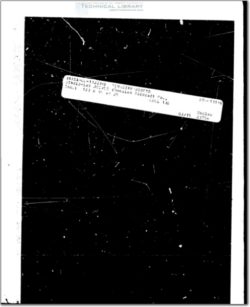NASA-CR-112236

- Version
- 819 Downloads
- 4.55 MB File Size
- 1 File Count
- April 19, 2016 Create Date
- April 19, 2016 Last Updated
Adhesive Bonded Single Lap Joints

ABSTRACT
Explicit analytical solutions are derived for the static load-carrying capacity
of single-lap adhesive—bonded joints. A purely-elastic analysis represents a
considerable improvement over the classical solution by Goland and Reissner.
Also, the quantitative influence of adhesive plasticity in shear is established.
This beneficial influence is shown to be capable of explaining the premature
failure predictions by elastic analyses. Yielding of metal adherends at the
ends of the joint as the result of the eccentric load path is shown usually to
be the factor initiating failure for all but very short overlaps. In the case
of filamentary composite adherends, fracture of those 0° filaments closest to
the bond usually initiates an interlaminar shear failure within the laminates.
For thicker adherends, the dominant failure mode is shown to be that of peel
stresses in the adhesive and the associated interlaminar tension stresses in
filamentary composite adherends. The quantitative effects of adherend stiff—
ness imbalance are accounted for in this investigation.
KEYWORD DESCRIPTORS
Bonded Joints Single—Lap Joints
Adhesive Stresses and Strains Static Strength
Adherend Thermal Mismatch Elastic-Plastic Formulation
Adherend Stiffness Imbalance Adhesive Shear Stresses
Adhesive Peel Stresses Advanced Composite Joints
Eccentric Load Path Low Structural Efficiency
FOREWORD
This report was prepared by the Douglas Aircraft Company. McDonnell Douglas
Corporation, Long Beach, California under the terms of Contract NASl-ll234.
One summary report (NASA CR 22l8) and four technical reports (NASA CR 112235,
-6, -7. and -8) cover the work, which was performed between November l97l and
January l973. The program was sponsored by the National Aeronautics and Space
Administration's Langley Research Center, Hampton, Virginia. Dr. M. F. Card
and Mr. H. 6. Bush were the Contracting Agency's Technical Monitors.
The basic concept of bonded joint shear analysis by classical mechanics of
continuous structures in terms of the elastic-plastic adhesive model was devel-
oped initially undec Douglas Irad funding between l968 and l970. This contract
has permitted the work to be expanded greatly in both scope and detail. All of
the peel-stress studies were performed under this contract.
| File | Action |
|---|---|
| NASA-CR-112236 Adhesive Bonded Single Lap Joints.pdf | Download |

Comment On This Post